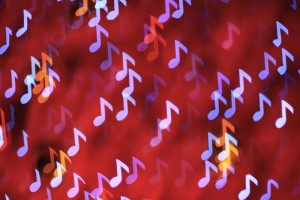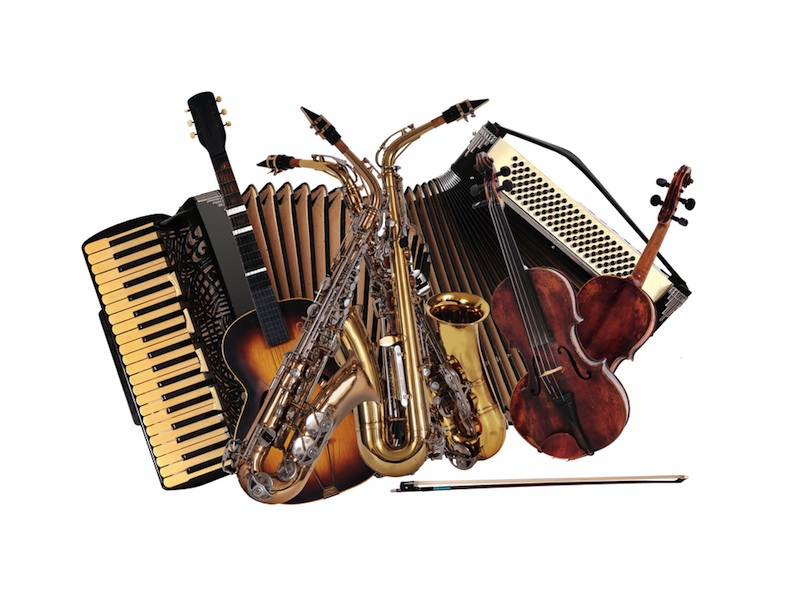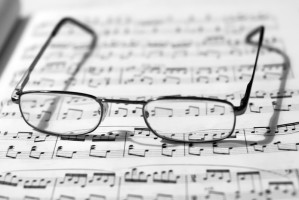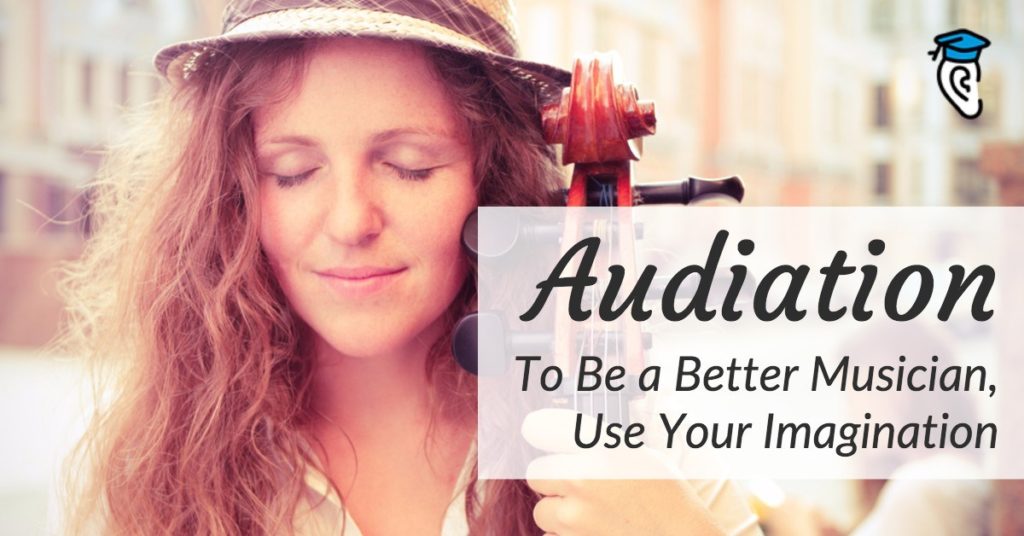As musicians, we have to process a lot of information in a very short amount of time. When we hear music, sounds are translated into concise items which then fit contextually into a space of time. Furthermore, if we are performing music, we are also producing even more sounds at the same time!
Zoltán Kodály created his revolutionary teaching approach based on using “inner hearing”, allowing his students to develop their listening, aural and performance skills in singing and ensembles. It trains people to be able to internalise and hear music inside their heads, without listening to or playing anything in the real world. Modern Kodály instructors teach this to all their students from a young age, and there is solid proof of improvement in their musicianship skills as a result.
Audiation is a technique derived from the Kodály method, and is a relatively new way of internalising music. In fact, I myself had never heard of audiation until very recently. However, it turned out I had been pulling off many aspects of this technique without realising…
In our previous article The Secret Music Practice Skill, audiation is defined in this way: Audiation is to sound what visualisation is to images. Visualisation is an excellent tool for artists who want to see the image before they draw it. Audiation is the same, in that it is a fantastic skill which can also help you to improve on your existing skills.
You can refer back to that previous article for the basics of what audiation is and how to do it. Today I’m going to discuss some other ways you can use audiation to improve your musicality. For musicians, audiation can give you an edge on playing your instrument, learning new music and even writing songs. Read on for guidance on how you can use audiation to improve each main aspect of being a musician.
Audiation helps you peel away the layers in music
Reading and analysing music can be compared to peeling an onion. There are always certain aspects of music that you notice before others. Often, our brains latch naturally onto aspects such as the main melody or where the beat goes. However, that is normally a very small part of what our brains are trying to process, either visually or aurally.
 Imagine if you were able to not only hear more parts at once, but analyse what is happening in each of those parts simultaneously – and all when reading or hearing music for the first time. With audiation, you can!
Imagine if you were able to not only hear more parts at once, but analyse what is happening in each of those parts simultaneously – and all when reading or hearing music for the first time. With audiation, you can!
Being able to analyse music aurally is of course very important for a musician. The musical part which each musician plays is only a fraction of the overall music an audience member hears at an ensemble performance. While practising your own part is very important, many aspects like general tempo, blend, and the balance of dynamics and acoustic rely on each player taking into account the whole group’s contribution. We have to listen in order to make these aspects sounds good. The key to listening effectively is to train our ears and musical imagination to let us hear and understand more at once in music.
Audiation can make practice time more efficient
As a singer, I am not able to practise for 6 hours a day, as it is a lot easier to overwork your voice as opposed to your hands. This, along with a heavy overall schedule means that I need to practise particularly efficiently.
I am a firm believer in using audiation outside of your allocated practice time to improve not only your skills with repertoire you are currently working on, but also improve your skills in general as a musician.
While singing is most definitely my first instrument, I also play the keyboard to a fairly high standard. I have found that if I don’t have time to practise extensively, I can still “practise” in everyday situations such as at my desk or while travelling. I often imagine myself singing along to tunes if I can’t physically do it for any particular reason, and tapping my hands on a flat surface to a keyboard part as I’m actually trying to play it.
Practising away from your actual instrument allows you to improve on four main aspects:
1. Physical instrument technique
Even away from your instrument, you can still work out fingerings, bowing techniques, breathing and vocal contours by listening to the music you need to practise.
Simply put yourself in the mindset you normally put yourself in while practising, imagine it as vividly as possible, and your brain will practise and learn in exactly the same way.
2. Memorising music
On top of the physical part, if you practise physical aspects of your playing by listening to music in your head, you are essentially learning how to remember your own part and everything else going on in the music at the same time!
This allows you to memorise new repertoire much faster as you are helping your brain to reinforce and retain the new information even without the need for the original source input.
3. Analysing music aurally
As musicians we each specialise in just one or a small number of instruments. However, as explained above, we still must strive to learn as much as possible about the instruments and parts we don’t play in order to understand and appreciate music more fully.
4. Playing “by ear”
Many songs are not available in a visual format, and even if they are, not everyone can read music or tablature. I for one can definitely not read keyboard tabs!
So often musicians need to resort to learning music by ear. This is an essential skill for other reasons, as it also improves your other skills such as improvisation and musical confidence.
Audiation helps you become more versatile
I listen to music practically everywhere. Especially when I’m out and about, I pay more attention to what is being played because of how I’ve practised audiation. Even if you don’t play the guitar, bass or drums, active listening with band recordings is a great way to improve your audiation skills.
Think consciously about how each part is being played. Listen to the pitches, the rhythm, the speed and so on. Becoming more conscious of each part will not only give you a better idea of how music is generally played, but it will also let you notice a lot more! You will find over time that you start hearing more subtle details that you previously didn’t pick up on. This could be both from a musical or production aspect (layers of mixing, compression and other details in the recording).
Imagine being a multi-instrumentalist
 Let’s take a more detailed example. People often say I’m a very good air guitarist, yet I don’t actually play the guitar. All I know about playing guitars is how many strings there are, how they are tuned, and that the higher you move up the guitar away from the headstock, the higher the pitch. How does that work then?
Let’s take a more detailed example. People often say I’m a very good air guitarist, yet I don’t actually play the guitar. All I know about playing guitars is how many strings there are, how they are tuned, and that the higher you move up the guitar away from the headstock, the higher the pitch. How does that work then?
Well, I’ve listened to a lot of music with guitars being a dominant instrument, and often when I listen to them, I attempt to visualise what they are doing and how they are playing. Since I began doing this, I am now a lot better at hearing different guitar parts such as rhythm and lead guitars, and also how to tell the difference between who is playing them.
In particular, there is a song I listen to with two guitarists and I used to struggle in telling who was playing which part. Now can tell almost instantly, and I can apply this to other songs as well, because audiation has made me a lot more aware of the intricacy of different layers in a track.
This has extended to many different instruments, some of which I have never played.
“But I can tell what people are playing from looking at sheet music or tabs!” Not quite. In my opinion people who go to concerts and constantly stare at the score, following it through, are missing out! You may know on a theoretical level, but as I said earlier, learning to listen to parts will make you far more aware than if you simply had the music in front of you.
I have definitely found that since I learned to open my ears more, and leaving the written music alone, that I became much more aware of everything that was going on in music.
Audiation helps you feel the beat
I have talked about the importance of pulse before, and how to improve it. Listening to music with a strong percussive beat can help on an aural perspective, but what if there isn’t one? What if you’re a vocalist and all you have to go on is a guitar or piano part? Once again, audiation can help!
In my previous article about holding your own part in a choir, I talk about using subdivision to prevent you from being out of sync with the beat. Subdivision can simply be summarised as a way of imagining the strong beat being split up multiple times, to make it easier for you to keep accurate time. It’s a lot easier to anticipate where the next beat is when there are lots of smaller beats instead of just a few large ones.
So if you are finding it hard to keep with the beat, don’t just listen to the drummer – listen to all the other instruments.
Who is playing the most intricate rhythms? Now take what they’re playing and compare it to someone playing slower rhythms. Where are their slower rhythms going compared to the faster rhythms? Are they on the beat or off the beat?
People are often put off with faster rhythms, either listening to them or attempting to play/sing them, because they’re harder right? Not in terms of pulse. Sometimes slower pieces are actually harder to play due to keeping the pulse! With faster pieces, sure there may be more to play, but they give you a much better idea of where the pulse is.
Remember the strong beats define the pulse, and the faster notes you can hear simply slot between them. So when you listen to faster music, visualise an emphasis on the strong beats and slot the rest of the notes in between.
You can use active listening to hone your awareness of the pulse, and it couples with your audiation skills as you “visualise” in your mind where the beat is coming from. Try to audiate the song after you’ve heard it and see if you can keep track of the steady pulse. The more you practice this, the stronger your internal sense of the pulse will be whenever you audiate music in your mind, and this will have a positive knock-on effect to all your real-world activities in music too.
Audiation improves your visual awareness
 Often, sight-reading is the most dreaded part of a music exam, but it is an undeniably useful skill for any musician. Musicians often have to learn new music quickly and learning to sight-read effectively can speed this process up hugely as you become far more comfortable playing music you have never seen or heard before. People who say they don’t like sight-reading tend to prefer music that is familiar to them. In other words, music that they can partially remember. The difference with sight-reading is that there are only small aspects that are familiar, such as notation rhythms and values, and they have to be interpreted differently.
Often, sight-reading is the most dreaded part of a music exam, but it is an undeniably useful skill for any musician. Musicians often have to learn new music quickly and learning to sight-read effectively can speed this process up hugely as you become far more comfortable playing music you have never seen or heard before. People who say they don’t like sight-reading tend to prefer music that is familiar to them. In other words, music that they can partially remember. The difference with sight-reading is that there are only small aspects that are familiar, such as notation rhythms and values, and they have to be interpreted differently.
When you read a book in your mother tongue, the brain takes the first and last letters and forms the rest of the letters in the middle without actually needing to read them properly, hence the fascination of that famous test where the wrdos aer jlmubed but you can still read them. This is no different when sight-reading music, and audiation can be used in the same way as you are able to take musical concepts you have heard and translate them to and from their visual representations.
Firstly with pitch, you can apply things you already know to give you a better idea of what to play. This could be done with certain fingering, or if you’re a singer this can be done with muscle memory or where the note lies in your range. Imagining the score notation each time you audiate performing a piece in your mind (see the section above about practising without your instrument) and you help your brain to learn those equivalences. In future when you see the pattern of notes on the page you will find your brain instinctively knows how they should sound – and vice-versa.
Similarly with pulse and rhythm. Remember when we talked above about latching onto and visualising the strong beats while slotting the notes in between? Imagine each bar divided up where the strong beats go and then determine how the rhythms fit from there. It’s much easier and faster to find where the strongest beats land and then fit other rhythms in-between rather than analysing each rhythm value manually. That would be like going through a word, working out each letter and then forming the word from that. Think of mapping out the pulse as a much more efficient way of learning rhythms, in the same way that one gets used to working out pitch by their position rather than counting up the notes via lines and spaces. By audiating rhythmic patterns and staying acutely aware of the pulse as you do so, you learn to spot these patterns of strong beats in the sound and on the score.
Audiation grows your musical imagination
If you are naturally inclined towards music, it’s very likely that you are able to imagine things with ease, come up with ideas creatively and think outside the box. Therefore I urge you, if you have not tried audiation before, to incorporate it into your practise and everyday life.
Audiation is one of those things that works slightly differently for every musician. The examples and accounts I have detailed above are very much how I have used audiation to my advantage, but don’t simply stop there.
Learn new ways to combine your musical abilities with your imagination to help improve them further, and remember, never stop learning and discovering the extent of what you are able to achieve with audiation!







